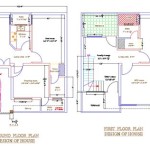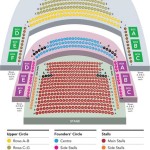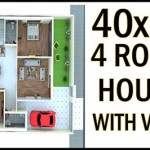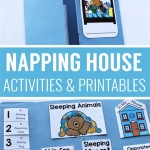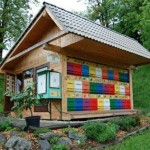Off Grid Tiny House on Wheels Plans: A Guide to Building Your Own Sustainable Retreat
## Introduction Living off the grid in a tiny house on wheels offers an exciting opportunity to embrace sustainability, simplify your life, and enjoy the freedom of being untethered from traditional utilities. With careful planning and preparation, building your own off-grid tiny house on wheels can be an incredibly rewarding experience. This article provides a comprehensive guide to help you navigate the process, from designing your tiny house to finding the right construction materials and creating a self-sufficient off-grid system. ## Benefits of an Off Grid Tiny House on Wheels An off-grid tiny house on wheels can offer numerous benefits, including: -Environmental Sustainability:
Living off the grid reduces your reliance on fossil fuels and minimizes your carbon footprint, promoting a more sustainable lifestyle. -Financial Savings:
Building and living in a tiny house can be much more affordable than traditional housing options, allowing you to save money while enjoying the comforts of home. -Simplicity and Freedom:
Living in a tiny house encourages minimalism and simplicity, allowing you to focus on what truly matters. The freedom to move your tiny house wherever you want adds an element of adventure to your lifestyle. ## Types of Off-Grid Tiny Houses on Wheels There are various types of off-grid tiny houses on wheels, each with unique features and designs. Here are some popular types: -Trailer Tiny House:
These tiny houses are built on top of a trailer frame, making them portable and easy to move. -Vans and Buses:
Converting vans or buses into tiny homes is a popular option, offering a more compact and maneuverable living space. -Box Tiny House:
Box tiny houses are built on a simple rectangular frame, providing a spacious and efficient living area. -Cabins and Cottages:
These tiny houses resemble traditional cabins or cottages, often incorporating off-grid features such as solar panels and rainwater collection systems. ## Designing Your Off-Grid Tiny House As you embark on the journey of building your off-grid tiny house on wheels, it's crucial to spend time carefully designing your living space. Here are some considerations: -Space Utilization:
Make the most of every square foot by designing a layout that maximizes efficiency and functionality. -Energy Efficiency:
Incorporate energy-efficient appliances, insulation, and windows to reduce your energy consumption. -Water Conservation:
Design a water system that minimizes water usage and allows for rainwater collection and storage. -Off-Grid Systems:
Include solar panels, batteries, and generators to ensure you have a reliable source of electricity. ## Choosing the Right Construction Materials Selecting the right construction materials is essential for the longevity and resilience of your off-grid tiny house. Consider the following factors: -Weight:
Choose lightweight and durable materials to minimize the overall weight of your tiny house. -Durability:
Opt for materials that can withstand harsh weather conditions and heavy usage. -Energy Efficiency:
Use energy-efficient materials such as insulated panels and energy-efficient windows. -Sustainability:
Choose sustainable and environmentally friendly materials whenever possible. ## Building Your Off-Grid Tiny House Building an off-grid tiny house on wheels requires careful planning and execution. Here are the general steps involved: 1.Foundation:
Construct a sturdy foundation using a trailer frame, concrete piers, or a combination of both. 2.Framing:
Build the walls and roof using a combination of metal studs, wooden beams, and insulated panels. 3.Insulation:
Install insulation in the walls, roof, and floor to improve energy efficiency and comfort. 4.Windows and Doors:
Choose energy-efficient windows and doors that provide adequate ventilation. 5.Interior Design:
Design and install the interior layout, including cabinets, countertops, appliances, and furniture. 6.Off-Grid Systems:
Install solar panels, batteries, and generators to provide electricity. Set up a rainwater collection and storage system. 7.Testing and Refinement:
Test all systems and appliances to ensure they are functioning properly. Make any necessary adjustments or refinements. ## Conclusion Building an off-grid tiny house on wheels can be a challenging but incredibly rewarding experience. With careful planning, proper construction techniques, and the right materials, you can create a self-sufficient and sustainable living space that allows you to embrace a simpler and more sustainable lifestyle. Remember to conduct thorough research, seek professional advice when necessary, and enjoy the journey of building your dream off-grid tiny house on wheels.
Off Grid Diy Tiny House On Wheels Sustainable Simplicity

Tiny House Plans The Project

Diy Off Grid Tiny House Is High On Specs Design And Comfort
:max_bytes(150000):strip_icc()/1-LaMar-Alexander-Off-Grid-Cabin-Ext-smallspaces.about.com-56a889383df78cf7729e9fb9.jpg?strip=all)
You Can Build This Tiny House For Less Than 2 000

Davis Off Grid Tiny House By Mitchcraft Homes Living

Shakalo 20 Tiny House Rocky Mountain Houses

Tiny House On Wheels Plans Appliances

Madeiguincho Unveils Its Latest Off Grid Tiny House On Wheels In Portugal
:max_bytes(150000):strip_icc()/Off-the-grid-tiny-house-building-plans-via-smallspaces.about.com-56a889393df78cf7729e9fc1.jpg?strip=all)
You Can Build This Tiny House For Less Than 2 000

Diy 280 Sq Ft 100 Off Grid Tiny House
Related Posts


